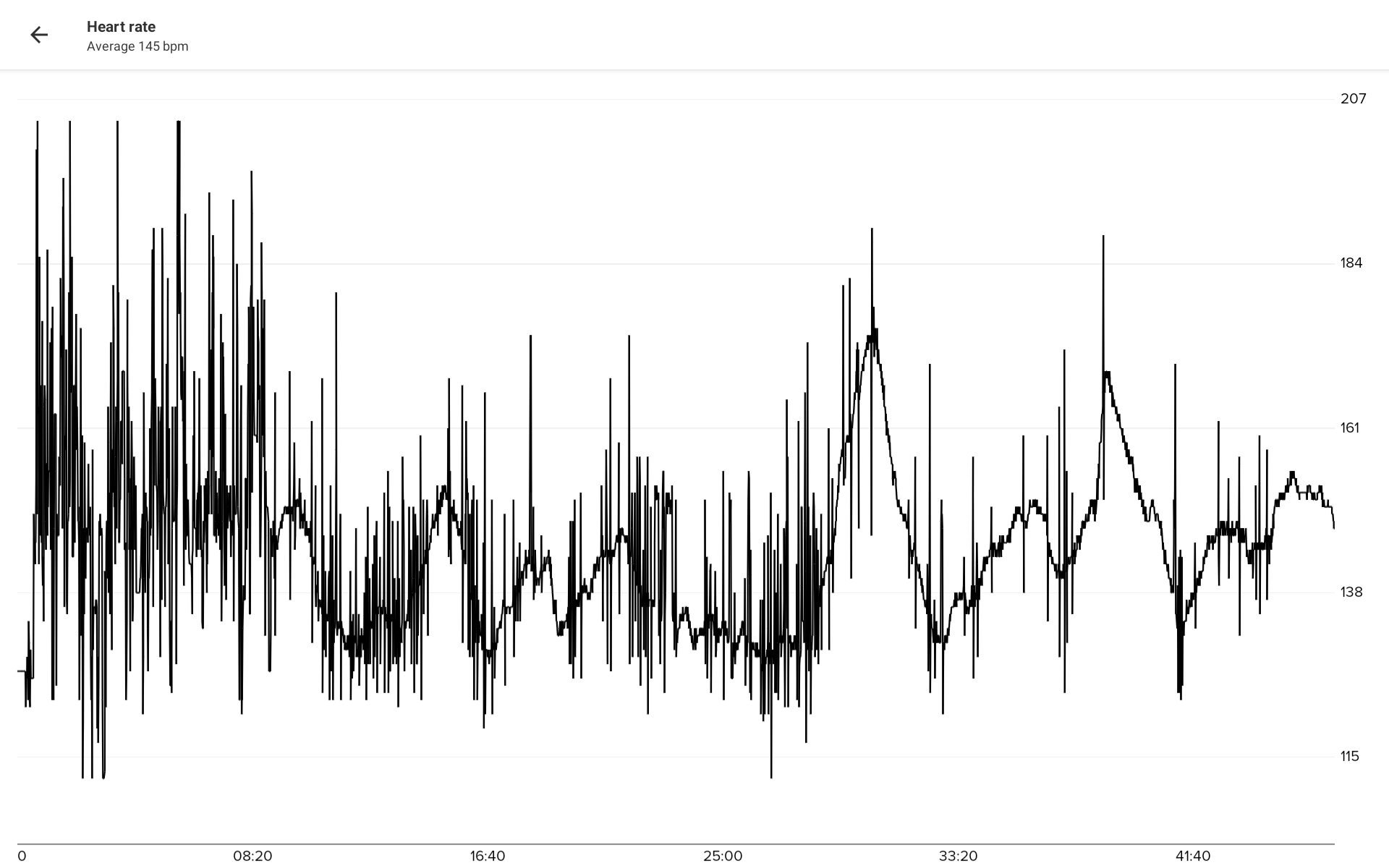VO2 Max
-
@zhang965 slowly converging

-
I have 56 in the lab and 48-50 with Suunto 9Peak and baro and 49 with Garmin.
-
I got 65 in lab, but never more than 60 on S9P, but S9B showed 62 a year ago.
Currently it shows 45.4, because I did slow (Z2) verticals in last two weeks, so mostly power hiking up and running down. Fast run on flat - VO2 goes up.
-
I had 60 in the lab and I’m around 56 to 59 in my S9B, depends a lot on the type of exercise you do, quickish/shortish/flatish run my VO2max goes up, the longer and hilly my runs are it goes down.
-
Thanks for all for sharing, really interesting to see! Mine is 63 in lab and 62 on Suunto watches (both Suunto 9 Baro and Suunto 9 Peak)
-
might seem a bit offtopic, but does anyone know if this type of HR error effects VO2max results?
normally I wear merino shirts for sports but sometimes during mental derangements, I pick plastic shirts and my observation is that they send greetings from tesla to the sensor

-
@freeheeler said in VO2 Max:
might seem a bit offtopic, but does anyone know if this type of HR error effects VO2max results?
It definitely affects! I think the important parameters for VO2Max are HR and pace. From my findings, you can have a nice bump in VO2Max if you run as fast as possible, 4/5 km in Z4 (Z3).
normally I wear merino shirts for sports but sometimes during mental derangements, I pick plastic shirts and my observation is that they send greetings from tesla to the sensor

I understand you are using a chest strap, I use polyester T-Shirts and never had this bad readings, now I’m using the Polar OH1 and it is the better for my use, I only want HR as a reference so I do not need more and I don’t care if there is a bit of delay regarding the chest strap.
-
@freeheeler i always wear polyester shirts, but I use a Polar H10.
3 weeks ago I did a lab test on the treadmill and an ekg was used to check the HR. Out of curiosity I used my H10 as well.
Data was absolutely on point (max ± 1 bpm).How old is you HR belt?
And btw I wouldn’t trust the VO2 max the watch give you.
My watch estimated a VO2max 15% lower than it really is (lab test) -
@theguyfromthesummit
my chest strap is about 13 months old and exactly after 12 month I’ve had to replace the battery.
It stopped working from one day to the other.
I’ll try and observe today again with a merino shirt.it surprises me that you and @cosme-costa don’t have issues like that with synthetic shirts, I thought this was one of the main reasons why we see these spikes

I use the VO2max value only as a reference for myself to understand if I am better or less in shape than in the past. The actual value itself doesn’t tell me much.
But I also made the experience that it is jumpy depending on the topography or how fast and far I am going… so basically, I could as well ignore it
-
@freeheeler I’ve never had those spikes with a working strap. Did you put yours in the washing machine? I once killed one that way. Current one is one year old, I had to replace the battery at some point last year, but it’s working well.
-
@isazi
No, I never put it in the washing mashine. I wash it by hand only. -
@freeheeler and you probably know, but worth repeating, if you completely wet the strap under the tap in some water before putting on it can help to eliminate some of that electrostatic discharge. It’s why usually after a while (you sweat) it helps.
-
Always hard to put on a wet HR strap though in the morning

-
-
@marcw
yes, I know. I’m wearing chest straps for over 4 years frequently now.
Hence I am going to order my 5th strap today… I really should start tagging the activities when I notice the strap is dying…
I remember that the newer strap should have been improved, but I can’t tell what’s been improved since it starts giving crazy results after one year, just like the straps before
-
-
-
@brad_olwin
@MarcW
slightly moist contact pads have been sufficient so far… I will for sure not put on a completely wet strap when preparing for a day resort skiing


